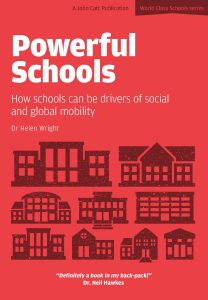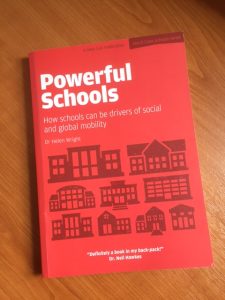If you read only one PhD thesis this year, make it this one. And if you only read one chapter of this thesis, make it Chapter 7 (which you will find on pages 175-249), entitled ‘The CEO habitus’. Submitted to the University of Queensland in 2011, this thesis is the work of Dr Terrance Fitzsimmons, who spoke earlier this week at the Alliance of Girls’ Schools Australasia conference in Brisbane, and in exploring the outcomes of the unique studies he undertook, he manages to uncover some essential facts about women’s pathways to the top of their careers. These facts, when shared widely and discussed, have the potential to shift on to a new level our awareness and understanding of gender inequality in our society. They are significant findings.
In preparation for his thesis, Terrance Fitzsimmons interviewed a sample of 31 female and 30 male CEOs from publically listed and large private sector Australian companies, and interviewed them about their life journeys. He used the framework of Pierre Bourdieu, the French sociologist and philosopher who died in 2002, to explore what Bourdieu called the ‘habitus’ of each person. As Fitzsimmons describes it,
“Bourdieu (1977) conceived of habitus as being the embodied history of each person. He proposed that habitus is the sum of experiences, accumulated over a lifetime, used by the individual both consciously and sub consciously. Bourdieu (1990) viewed childhood as being pivotal in habitus formation. The imprinting in early childhood of “proper‟ ways of behaving and interpreting the world form the basis of all meaning making by children at school and then, in turn, later in their career. This early learning becomes “the taken for granted‟ or “the social rules of the game of life (Jenkins, 2002; Taylor, 1999).” (Fitzsimmons, 2011:175)
In his interviews and subsequent analyses of the interviews, Fitzsimmons discovered a remarkable difference between the family backgrounds of these male and female CEOs. They shared a mainly middle-class background, and were from families with a strong work ethic, but, broadly speaking, the male CEOs had had what might be described as a stable, traditional family life, with a working father and a stay-at-home mother. On the other hand, the female CEOs (who represented, of course, a much higher percentage of all the female CEOs in the country than the male CEOs interviewed), had a different family background:
“Family life for the majority of the female CEOs could be broadly described as disrupted with major moves, family breakdowns, deaths or other traumatic events occurring either in late childhood or their teenage years being typical.” (Fitzsimmons, 2011: 183)
“Nearly all of the female CEOs came from families where their father was self-employed and their mothers were either actively involved in the business or employed in a range of other positions. In either case, their mothers were still identified as primarily responsible for maintaining the household. Very few of the female CEOs demonstrated what could be described as a “male childhood habitus‟. “(Fitzsimmons, 2011:192)
These differences are striking. They show just how much harder women have had to fight in order to reach positions of power and influence in our society, and they suggest just how critical early childhood experiences are in this process.
No doubt it is possible to cast doubt on these findings – is, for example the Australian context unique and therefore non-transferable? Given the social era in which these current CEOs were growing up as children, can we legitimately draw comparisons with what is happening today? Is a small scale research project like this sufficient to change our understanding?
These are, however, validated and remarkable results, thoroughly investigated and carefully exposed. They bring new insights to our understanding of what women have had to go through to get to where they are. They challenge us to think more deeply about the possibility that women are still being judged – unconsciously – against largely male criteria as they apply for roles; and they challenge us to focus more aggressively on what we are doing in families and schools to develop an acceptance and embracing of diversity as an even greater strength than conformity.
Moreover – because we can’t afford to wait for the next generation of children to filter into the workplace (and because we need in any case to make the workplace more open to the diversity that they can bring) – they challenge us to find a way to talk about this and work out constructive and forward-looking solutions that allow women and men to be valued for who they are and what they can bring.
Apportioning blame is unhelpful; developing an openness to the future is the way forward, and the first step – always – in this is to understand where we have come from. Business is not to blame for where we are – although businesses have a significant responsibility in helping to find solutions. Families and schools are almost certainly the crucibles where change will happen. As Dr Fitzsimmons puts it, “The findings of this thesis suggest that far greater attention needs to be placed upon interventions in the ways in which we socialise and educate our children.” (Fitzsimmons, 2011:254).
None of us are off the hook in this respect, however; the stark reality is that we all have much more to do, and urgently, if we are to come close to achieving gender equality in the workplace.




